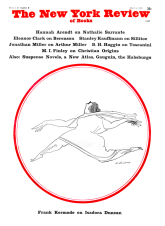Even in England, where it can be had for $73.50, this book will grace few homes. It is heavy equipment. Top to bottom it exceeds twenty inches, nineteen being a two-millionth of the length of Great Britain, and it opens to half a square yard. It can usefully occupy broad tables in major libraries, and also in great offices where farreaching plans are laid. Page by farreaching page it offers the far-reaching planner a vue d’ensemble of how the todder roots and green crops, the department stores and bacon factories, the breweries, coke ovens, sycamores, people, and skilled people are disposed over the face of the United Kingdom. Forward looking, it maps the rates of population growth; upward, the sunshine and rain; downward, the underground water resources and all the geologic inwardness of Great Britain and Northern Ireland.
Out of 200 map pages, 120 are given over to 120 maps that are identical in outline, each depicting the whole country over again on a scale of a two-millionth. Each conveys without clutter its own peculiar intelligence. Even a map that shows the boundaries of all the parishes in Britain is uncluttered. What obviates clutter is a loose transparent map that can be superimposed on any of these uniform maps to name and place the towns and counties.
While these maps cover a great variety of topics, there are haunting recurrences of internal pattern. Configurations that emerge in the relief map, in the geological maps, and in various botanical maps tend strikingly to coincide; for geology affects relief, and relief vegetation.
The most notable of these internal features is the Highland Line, a steep fault diagonally dividing Scotland. The threat of arrow or musket ball that once attended the crossing of this line has subsided, but in other ways the line still figures. The map of metamorphic rocks is a burst of color above the Highland Line and nearly blank below. The maps of road traffic, rail traffic, and telephone traffic are full of facts below the line and nearly blank above. The maps of population, groundwater, vegetation, factories, and labor all show that things this side of the line are one way, that side another. Clearly this line, not the Scottish border, marks the main dichotomy of Great Britain.
The loose transparent map is one of the inventions that makes this book good. Another is a curious flap pamphlet of Notes and Sources, so attached to the outer edge of the back cover that any of its pages can be exposed alongside any of the maps. I regret that a third helpful expedient, used in Beckmann’s Hand-Atlas (Leipzig, 1932), was not adopted too. If a map spans facing pages without a break, you cannot easily measure across the seam; nor can you find places in the seam, unless by straining the binding. Beckmann’s solution: print the two-page map rather on one page that folds out to double size.
All those maps at a two-millionth were on separate pages, true; but we do at length come to some maps that cover the country piecemeal at a half-millionth, and six of these are two-page spreads. This is still not the scale where houses would be marked, but it is an eighth of that. These maps show altitude by tint and contour by shadow. Distinctive marking is contrived also for woodland, pasture, field, and settlement. The colors are harmonious and naturalistic.
An index of places takes up 256 running feet of column. The lower limit of coverage is perhaps Godstow (Oxon.), which is not shown.
The book contains vast information. It was twelve years in the making and is evidently authoritative. There was an editorial committee of five Oxford and Cambridge geographers and economists, and there are acknowledgements to some 600 persons and organizations. The cartography is elegant, the paper heavy, the binding strong. Black endpapers are etched with a delicate pattern compounded of British coastlines. One would not have paid a hundred of one’s own taxed dollars for the book, but is glad to have it.
This Issue
March 5, 1964



